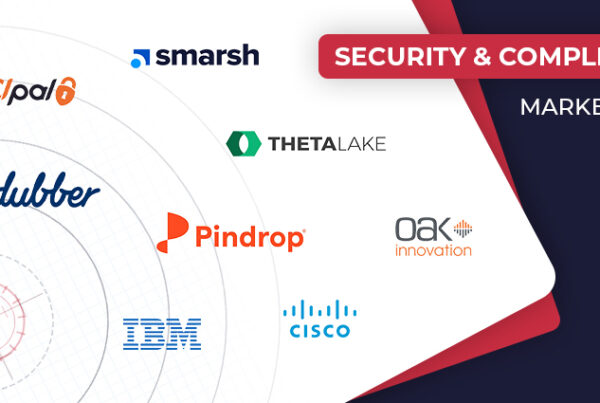
The COVID-19 pandemic has highlighted the need to update and fix some of our current tech systems, including remote work models. In companies that were unprepared for the sudden transition to a distributed workforce, leadership teams are now fully engaged in planning some much-needed technology changes and upgrades, including embracing the capabilities of the cloud, artificial intelligence and machine learning.
While nearly every business will have to make some technology adjustments for the post-pandemic world, certain changes will be more widespread than others. We asked the members of Forbes Technology Council what urgent tech needs the current crisis has highlighted for many businesses. Below, they share some changes that they believe most companies will need to address.
1. Invest In Reliable Cloud And SaaS Tools
In this crisis, one thing we’ve seen is that some of the larger organizations we work with are struggling to host and connect all of their employees working remotely. Today, their on-premise infrastructure is simply not able to meet the digital needs of their entire workforce. Companies need to anticipate new work practices, unload that technical burden and migrate to the cloud and SaaS tools. – Sébastien Ricard, LumApps
2. Implement Security And Monitoring
Agile software is more important. Companies operating in the cloud with secure DevOps workflows can quickly adapt as requirements shift. With apps and infrastructure stressed, visibility to head off performance and availability issues improves customer experience. Bad actors may see opportunity in this situation. Preemptively implementing security and monitoring best practices keeps apps healthy. – Suresh Vasudevan, Sysdig
3. Focus On Quality And Learning
Leaders need to push for production excellence and a culture of continuous learning. It’s crucial to have your team performing as efficiently as possible, as the stakes are higher than ever. However, production excellence comes from making adjustments to your processes. Learning from previous incidents allows your team to function better and can even prevent future incidents. – Ashar Rizqi, Blameless
4. Update Old Software And Hardware
The key to preventing attacks during times of crisis is ensuring you have the tools to protect you—which includes updating old software. As software has evolved, better security practices have grown with it. Because of this, certain older software does not have the capability to protect data. In addition to replacing software, old hardware should also be replaced. – Joseph Feiman, WhiteHat Security
5. Back Up All Business Data To The Cloud
Businesses that fought adopting cloud technology are now struggling to abide by the COVID-19 stay-at-home orders across the nation. Enterprise VPN systems were not designed for 100% of a company’s workforce to be online all at once. Cloud migration is not a short-term solution, so the only option is to try increasing the bandwidth and scale on the network and VPN hardware. – Bret Piatt, Jungle Disk
6. Monitor Risk Within Video Collaboration Platforms
The mass movement to collaboration tools that support rich media, including images, videos and full video meetings with built-in whiteboarding, has helped organizations stay connected and productive. It also means risk and compliance teams should add monitoring technology to this new primary channel, which can expose private data, create liability issues and trigger regulatory violations. – Devin Redmond, Theta Lake
7. Invest In Tools That Keep Systems Up And Running
IT teams are swamped with alerts and support tickets, and services use is at an all-time high. Leaders can help mitigate this chaos with AI- and ML-powered tools that help keep IT systems up and running while taking the stress off of IT operations teams. Customers have long memories, and they will remember which services helped them when the chips were down, and which services let them down. – Phil Tee, Moogsoft
8. Adopt Cloud Contact Center Technology
Many businesses are seeing an uptick in customer support as consumers are reaching out regarding outstanding orders, deliveries, corporate policy updates and more. Cloud contact center technologies allow support agents to safely and securely work remotely and have fast and easy access to key customer information and data, and they also allow businesses to mitigate costs on hardware and office space expenses. – Anand Janefalkar, UJET
9. Rethink Your VPN Strategy
Allowing employees remote access to the digital assets of your company is critical to making sure the business can continue flawless operation without the need for employees to be physically present in the offices. We’ve seen companies suffering from VPN shortages in the early days of the lockdown, causing immediate hiccups. Rethink your VPN strategy and prepare for the new reality ahead. – Pawel Rzeszucinski, Codewise
10. Adopt New Security Measures For Teleworking
The ability to protect against security threats associated with a remote workforce is vital. With many employees using personal devices to access company IT resources, attackers can bypass security controls by compromising vulnerabilities in remote endpoints. Using security analytics to monitor unusual behaviors inside the network can proactively detect and stop malicious activity before it’s too late. – Saryu Nayyar, Gurucul
11. Prioritize Email Protection
The massive shift to remote work has made email the most important communication method for many companies. This highlights the need to protect email and the sensitive information it contains from both human error and new hacker threats. Companies should upgrade email protection and draw on tools that use advanced technology to secure communication among employees, customers and suppliers. – Edward Bishop, Tessian
12. Embrace E-Commerce Now
The current crisis has made it clear that moving to a digital-first model is a necessity. Move your customer engagement and sales to embrace e-commerce, and fast. A lot of business has already moved to digital selling by necessity, so the faster you get there, the more business you will capture. Simply put, the move to digital buying is one that’s likely to stick. – Geoff Webb, PROS
13. Expedite Your Cloud Adoption
This crisis has influenced companies to focus on and identify cost savings. One of the conclusions they’ve reached is that cloud adoption must be expedited. Companies that have been running both on-premises and in-the-cloud environments will find that they need to expedite the migration to the cloud for agility and cost savings and because of the lack of technical talent. – Manish Gupta, ShiftLeft
14. Future-Proof Your BCP With Software As A Service And Mobile IT
From a technology perspective, this event, more than anything else, has underscored the need to future-proof business continuity plans with SaaS-based and mobile technology that enables organizations to seamlessly switch their workforce from office to home. That type of flexibility is good to have any time, but it’s essential during times like these. – Hoony Youn, MackeyRMS
15. Become More Adaptive With Low-Code Platforms
In recent weeks, tech leaders have been devising strategies to address the challenges COVID-19 has brought. Businesses need to change processes rapidly. One of the best tech upgrades they could have right now is a low-code platform that allows implementing changes lightning fast. When automating business ideas is only a matter of minutes, organizations are better equipped to respond to uncertainty. – Katherine Kostereva, Creatio (formerly bpm’online)
16. Use Multifactor Authentication
The current crisis has highlighted the need to provide your staff and third-party users access to the systems they need when working remotely in a manner secure enough to keep out attackers. Multifactor authentication (MFA)—especially on all privileged accounts and business-critical systems—is a must to safeguard your enterprise from unauthorized access resulting from stolen credentials. – James Litton, Identity Automation








 This article first appeared on Forbes,
This article first appeared on Forbes,

